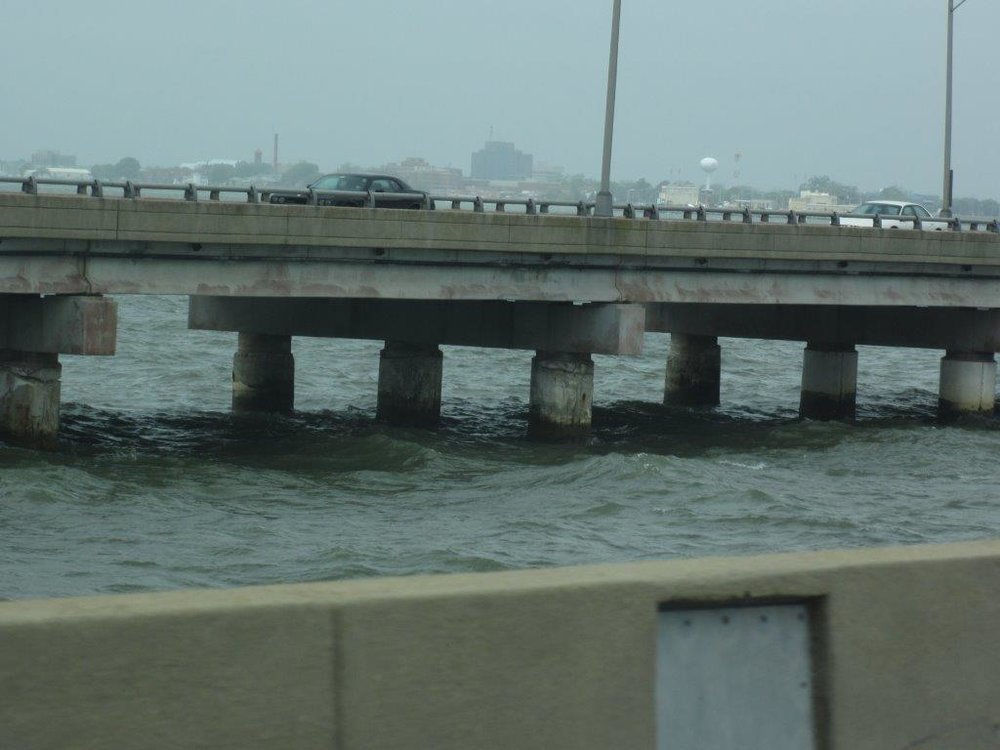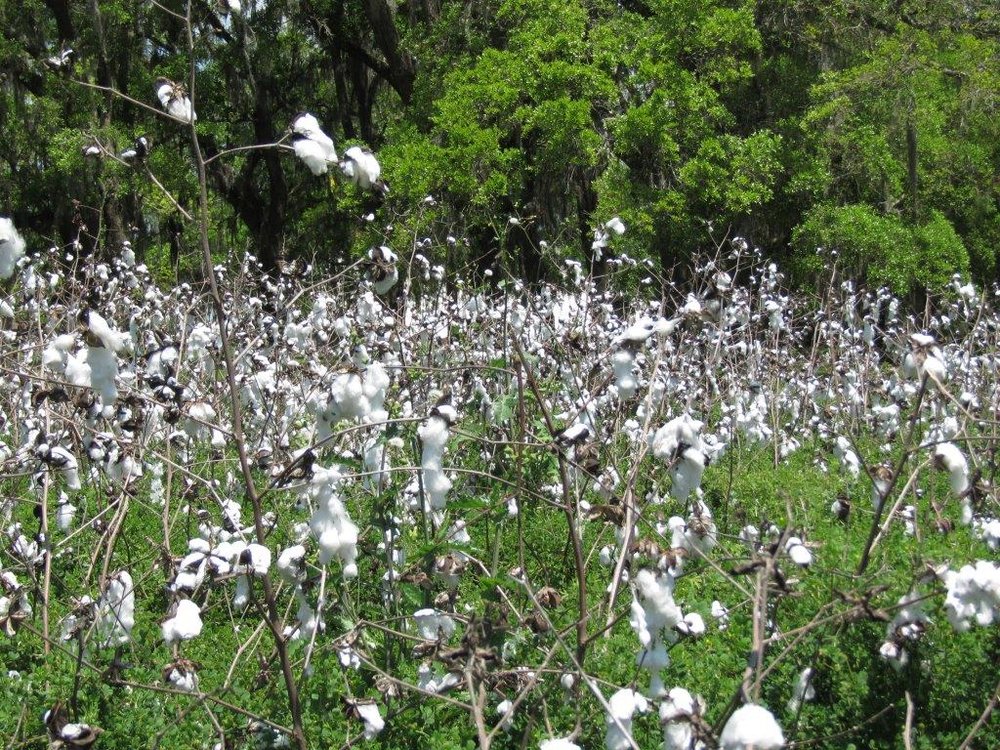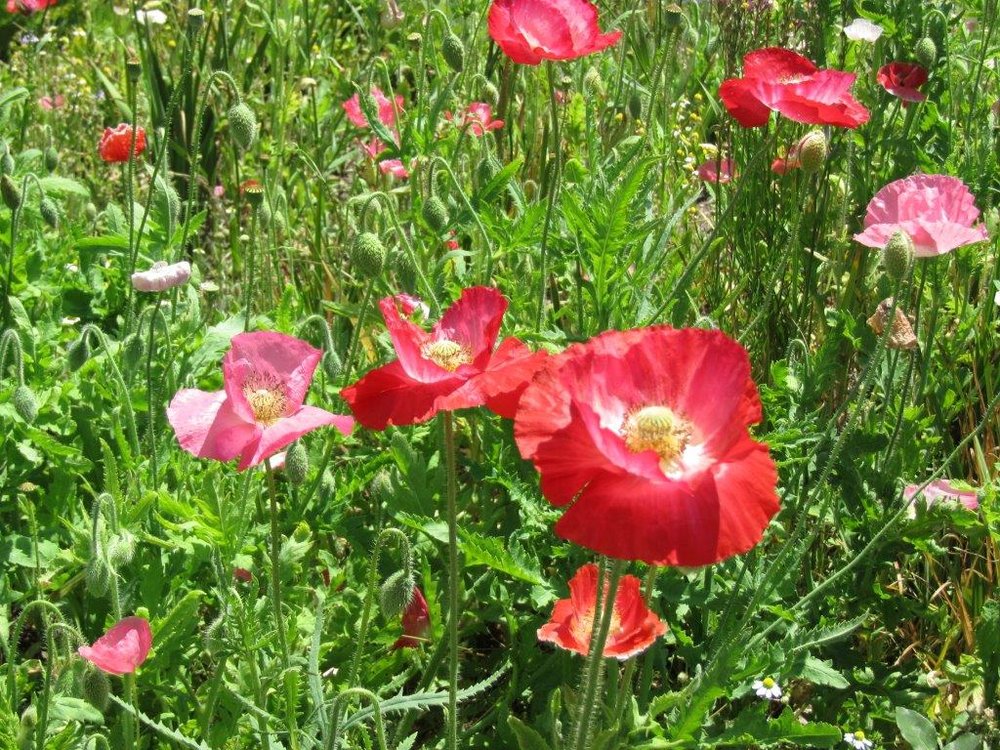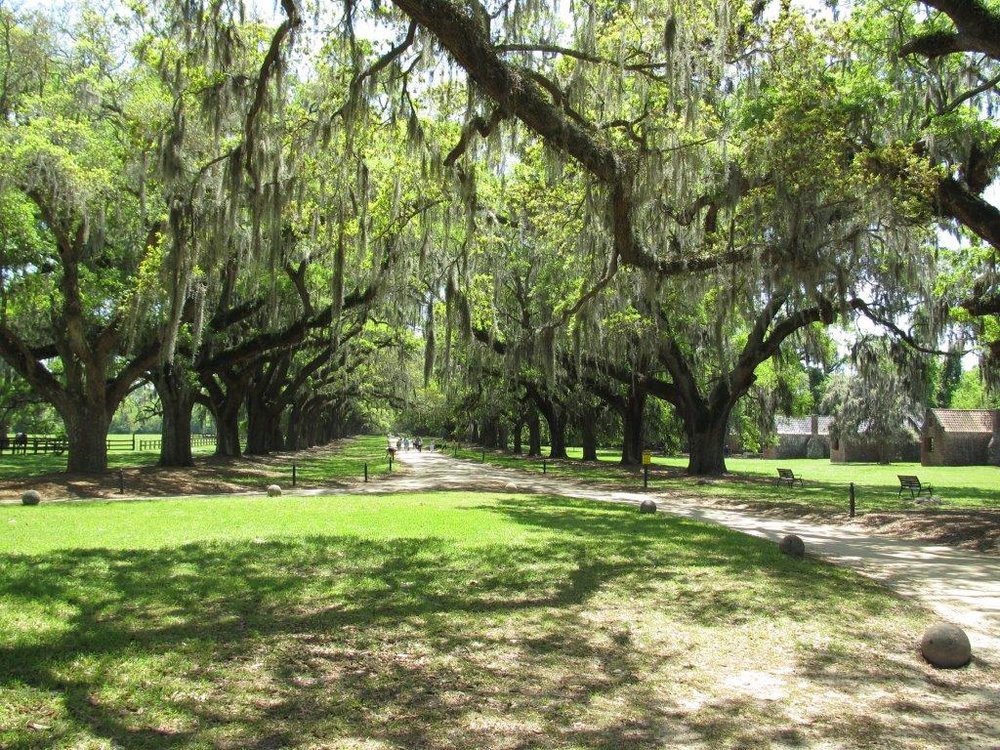On the Road
/I have been on the road quite a lot the past few weeks. There were some long stretches where I was driving and kept myself focused on that activity rather than noticing too much of the scenery. This blog is about the times I was not driving and the road itself drew my attention.
 There was an unpaved road of an oak allee. In the 1860s, the trees would not have been as massive but the road would have been like this - a white, sandy track near Charleston, South Carolina. I saw it on a tram tour. It is just a road to nowhere now since the plantation house is gone.
There was an unpaved road of an oak allee. In the 1860s, the trees would not have been as massive but the road would have been like this - a white, sandy track near Charleston, South Carolina. I saw it on a tram tour. It is just a road to nowhere now since the plantation house is gone.
 I posted about the Ravenel Bridge a few days ago. This picture shows the approach to the bridge and the graceful arc the bridge makes between the supports. The traffic moved at highway speeds the 10 or so times we crossed the bridge. Is the beauty and uniqueness of the bridge distracting enough to cause accidents? I didn’t see any but was glad I was not driving.
I posted about the Ravenel Bridge a few days ago. This picture shows the approach to the bridge and the graceful arc the bridge makes between the supports. The traffic moved at highway speeds the 10 or so times we crossed the bridge. Is the beauty and uniqueness of the bridge distracting enough to cause accidents? I didn’t see any but was glad I was not driving.
 On foot in Charleston, we walked along tourist clogged sidewalks on Church Street. This was a place where being on foot was better than being in a car. The palm trees and window boxes added color to the brick and ironwork of the buildings. And sometimes the street pavement was cobblestones rather than asphalt!
On foot in Charleston, we walked along tourist clogged sidewalks on Church Street. This was a place where being on foot was better than being in a car. The palm trees and window boxes added color to the brick and ironwork of the buildings. And sometimes the street pavement was cobblestones rather than asphalt!
 The bridge and tunnel between Norfolk and Hampton, Virginia was another opportunity to photograph the road from a passenger seat. The choppy water under the bridge sometimes formed white foam against the pillars of the bridge. The tile in the tunnel reflected the red tail lights.
The bridge and tunnel between Norfolk and Hampton, Virginia was another opportunity to photograph the road from a passenger seat. The choppy water under the bridge sometimes formed white foam against the pillars of the bridge. The tile in the tunnel reflected the red tail lights.
And now I am home again - for a little while.































